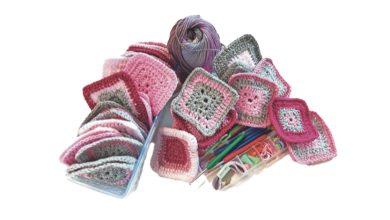Who Can You Bank On?
Remember the days when the leading citizens of the town or suburb included the local bank manager?
The bank manager would be invited to the local charity balls or invited to present prizes and awards to worthy citizens at various presentation ceremonies.
This perhaps had nothing to do with the facts that they handled everyone’s bank deposits or had the power to approve loans for various purposes. It was seen that they were responsible and, hopefully trustworthy, respected pillars of the community. Some were quite humble people.
My late mother-in-law once was asked to take on the role of cleaner at a bank. She turned up one morning to start cleaning and found that she did not have a key to the door of the bank. She called at the manager’s residence which was attached to the bank and was shown in.
The manager took her through the kitchen area of the residence to get the key and she was surprised to see the family sitting around the kitchen table having breakfast with the table covered with newspaper instead of a tablecloth. It was a surprise as she was used to seeing the manager in suit and tie always neatly dressed and to see the kitchen table in such a way without a tablecloth.
A cousin of my wife (Keith Gray) who was involved in Little Athletics in the Hills district also became a bank manager and at the time was the youngest appointed Commonwealth Bank manager in Australia. He later transferred to Papua and then to the Philippines and passed away during 2020.
Local bank managers are becoming scarce in the community now and, that said, I thought I would look at the history of banking in the country. When I arrived in this land of opportunity back in December 1958 there seemed to be a bank on every corner in the CBD’s of virtually every town or suburb.
There were branches of the CBC (Commercial Banking Company of Sydney, the CBA (Commercial Bank of Australia) the ES&A (English, Scottish and Australian Bank), the Rural Bank of NSW, as well as those now called the Big Four (Commonwealth, National, ANZ and the Bank of NSW now renamed Westpac).
As well as those banks, there were also smaller institutions where you could also lodge your savings by making deposits or by making withdrawals. These smaller institutions were largely known as Building Societies or as Credit Unions. There were no Credit Cards, Debit Cards or ATMs back in the 1950s and 60s.
The first bank in Australia was the Bank of New South Wales, established in Sydney in 1817. It was to remain the dominant, nongovernment owned bank until 1960. The Federal Government-owned Commonwealth Bank was established in 1911, and by 1913 had branches in all six states. In 1912, it took over the State Savings Bank of Tasmania (est. 1902) and did the same in 1920 with the Queensland Government Savings Bank (est. 1861).
As with many other countries, the Great Depression of the 1930s brought a string of bank failures. In 1931, the Commonwealth Bank took over two faltering state savings banks: the Government Savings Bank of New South Wales (est. 1871) and the State Savings Bank of Western Australia (est. 1863). In 1991, it also took over the failing State Bank of Victoria (est. 1842). It later went on to also acquire the Perth based Bankwest.
Other prominent mergers or acquisitions took place among other banks. In 1835 a London-based bank called the Bank of Australasia was formed that would eventually become the ANZ Bank. In 1951, it merged with the Union Bank of Australia, another Londonbased bank, which had been formed in 1837.
In 1970, it merged with the ES&A Limited, another London-based bank, formed in 1852, in what was then the largest merger in Australian banking history, to form Australia and New Zealand Banking Group Limited. The Bank of NSW merged with the CBA (Commercial Banking Company of Aust) to form what is now Westpac. Whilst the National Bank merged with the CBC (Commercial Banking Company of Sydney) and changed its name to National Australia Bank.
Following changes in regulations, many building societies and credit unions underwent changes with some demutualising and becoming banks or remaining mutual organisations that were allowed to use the term “bank” in their trading names. Some of the demutualised building societies that had become banks then acquired some smaller State-based banks.
The NSW Permanent Building Society had changed its name to the Advance Bank and went on to acquire the Adelaide based Bank of South Australia, whilst another demutualised society had become known as the Bendigo Bank went on to merge with the Bank of Adelaide. Advance Bank was later acquired by Westpac who also acquired St. George, a former building society that had demutualised, as well as the Bank of Melbourne.
Credit cards first arrived in Australia in 1968 with the introduction of “Bankcard” which was supported by all the major banks. The banks posted out the “Bankcard” credit card to virtually every customer at the time. It was reported that some children and pets received cards in the post. Many people could not fully understand the implications of purchasing something with their Bankcard and soon found themselves heavily indebted to the banks who had issued the card to them.
As the Bankcard could not be used overseas and because of the financial problems incurred by many from overuse or misunderstanding of the terms of use, its popularity waned. Overseas credit card companies such as Diner’s Club, American Express, Visa and Mastercard gained an increasing foothold in this country. More and more retailers and other companies were starting to accept credit card payments for goods and services. As one company said in its advertising and promotion “You wouldn’t leave home without it.”
My wife and I have long been supporters of Credit Unions or Mutual Banks and, in fact, my wife served on the Board of Directors of a small Credit Union back in the early 1970s. Our private company that we operated in the 1990s and early 2000s also served a number of Credit Unions and assisted a few in conducting mergers or takeovers of others with some eventually becoming Mutual Banks.










